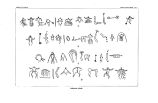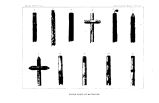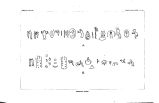| OCR Text |
Show XXVIII ANNUAL REPORT OP THE DIRECTOR and so covered them that the arrangement of rooms could scarcely be traced at all. The modern village of Ojo Caliente was also surveyed and diagrams and photographs made. Towards the end of September camp was moved to the vicinity of Zuili. Here four other villages of the Cibola group and the old villages on the mesa of Ta- ai- ya- lo- ne were examined. Camp was then moved to Nutria, a farming pueblo of Zuiii. From this camp Nutria was surveyed and photographed, and also the village of Pescado, which is occupied only during the farming season. Both of these modern farming pueblos appear to be built on the ruins of. more ancient villages, the remains of which were especially noticeable in the case of Pescado, where the very carefully executed masonry, characteristic of the ancient methods of construction, could be seen outcropping at many points. WORK OF MR E. W. NELSON. Following the return of the main party to Washington, some preliminary exploration was carried on by Mr. E. W. Nelson, who made an examination of the headwaters of the South Fork of Salt River, but did not find any ruins. Thence the Blue Ridge was crossed, and the valley of the Blue Fork of the San Francisco River visited. Here ruins were frequently increasing in number toward the south. Farther south three sets of cliff ruins were also located. GENERAL FIELD STUDIES. WORK OF DR. H. C. YARROW. During the summer and fall of 1885, Dr. H. C. Yarrow, acting assistant surgeon U. S. Army, examined points in Arizona and Utah. In the vicinity of Springerville, Apache County, Arizona, in company with Mr. E. W. Nelson, he visited a number of ancient pueblos and discovered that the people formerly occupying the towns had followed the custom of burying their dead immediately outside the walls of their habitations, marking the places of sepuloher with circles of stones. |














































































































































































































































































































































































































